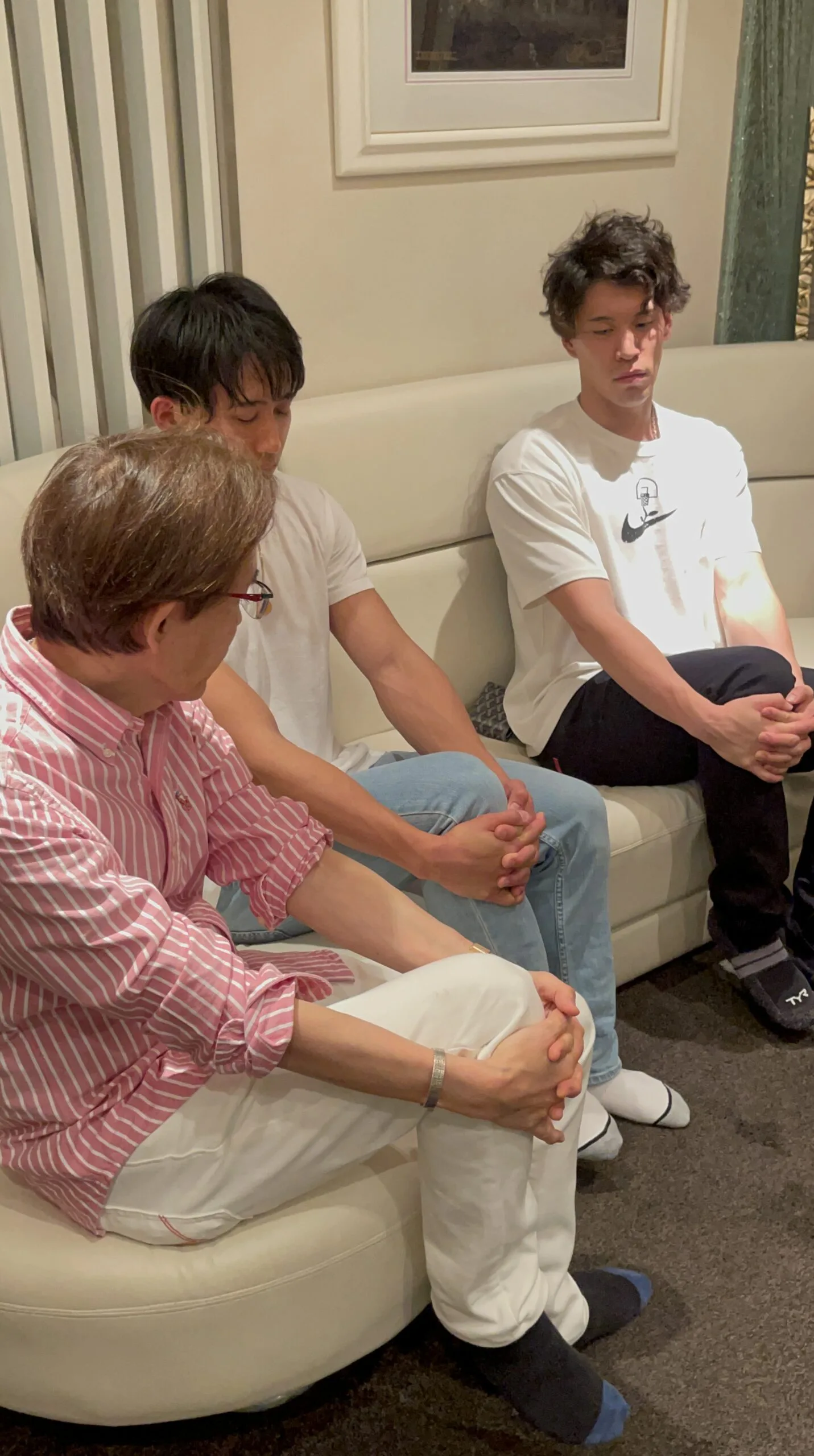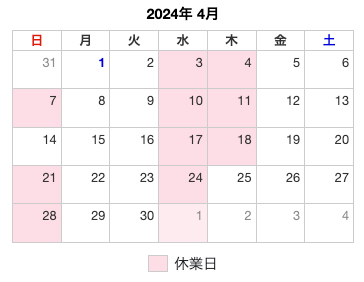Reading Time: 2 minutesToday at Chukyo University OB, Tokyo Olympic Swimming Japan Representative Takeshi Kawamoto
https://global.toyota/jp/company/trajectory-of-toyota/sports/mobility-for-all/athlete/takeshi_kawamoto.htmlPlayers and Akira Namba
https://www.jiji.com/jc/tokyo2020?s=profile&id=competition-og2020_person-nanba-akira-0001&a=olySWMI was blessed with the opportunity to instruct athletes on their lung and thoracic training.This was an introduction from Shinji Aoto, director of the Chukyo University track and field team.After Kawabata, a member of Japan's national track and field team, dramatically improved his performance, he was asked to instruct Chukyo University alumnus and member of Japan's national swimming team.In particular, the individual butterfly event and freestyle relay are strong events in which Japan can aim for medals.



Yuichiro Sasaki Former JOC Swimming National Coach
https://www.joc.or.jp/sp/games/olympic/riodejaneiro/sports/swimming/team/sasakiyuichiro.htmlI was able to attend the meeting with you at your request.Coach Sasaki is well known to everyone involved in competitive swimming, and the competitive swimming team was very active. She also served as the national coach at the Rio Olympics.First of all XNUMX: Autonomic nerve function measurement (BIOCOM HRV heart rhythm SCANNER analysis system)



390: Lung function / respiratory function measurement (Electronic diagnostic spirometer Spiroshift SP-XNUMXRhino)




We conducted an inspection.As expected from an Olympian...it was a great result.Both of them had parasympathetic nervous system predominance and high TP, which is the perfect data for top athletes.His spirometer results, lung capacity, and other data are exactly that of a top athlete.Today, we will further improve this function by learning how to move the ribcage smoothly, how to use the body, and how to condition and train to increase the maximum oxygen intake during breath breaks, which is the biggest advantage of swimming. I provided detailed explanations and guidance.Top athletes have sensitive bodies.The results seemed to be felt immediately.Coach Sasaki was also pleased and agreed.All instruction is based on functional anatomy and exercise physiology, and since it is competitive swimming, the results can be quantitatively evaluated in the form of time.
The trainer doesn't need charisma.
Together with my co-researcher and superior, Professor Hiroyuki Kobayashi of Juntendo University School of Medicine, I have provided autonomic nervous training and breathing techniques guidance to many top athletes.The culmination of his work was published by Ascom last month.
https://www.amazon.co.jp/gp/product/4776211238?pf_rd_r=8V5NBQE3QTHSF7NDYFDR&pf_rd_p=7626af39-b716-47c8-84eb-9679f177dc53&pd_rd_r=7b2f7389-889d-4ef2-a552-be80b05afd5a&pd_rd_w=TjrUs&pd_rd_wg=KKXhx&ref_=pd_gw_unk
Considering the autonomic nervous function and respiratory function, I think that we are the only ones in Japan who provide thoracic training and guidance to top athletes with lung activity.
Improvement of autonomic nerve function → Breathing method → Chest training → Lung activity → Immunity improvement
It leads toWe believe that true conditioning and training guidance is one that allows for quantitative evaluation based on evidence, functional anatomy, exercise physiology, individual characteristics, and competitive characteristics.Both are top athletes in Japan who have a high chance of winning medals.I sincerely hope that the Tokyo Olympics will be held once the new coronavirus has subsided and we will be able to see them win medals through their efforts.


 Yuichiro Sasaki Former JOC Swimming National Coach https://www.joc.or.jp/sp/games/olympic/riodejaneiro/sports/swimming/team/sasakiyuichiro.htmlI was able to attend the meeting with you at your request.Coach Sasaki is well known to everyone involved in competitive swimming, and the competitive swimming team was very active. She also served as the national coach at the Rio Olympics.First of all XNUMX: Autonomic nerve function measurement (BIOCOM HRV heart rhythm SCANNER analysis system)
Yuichiro Sasaki Former JOC Swimming National Coach https://www.joc.or.jp/sp/games/olympic/riodejaneiro/sports/swimming/team/sasakiyuichiro.htmlI was able to attend the meeting with you at your request.Coach Sasaki is well known to everyone involved in competitive swimming, and the competitive swimming team was very active. She also served as the national coach at the Rio Olympics.First of all XNUMX: Autonomic nerve function measurement (BIOCOM HRV heart rhythm SCANNER analysis system)


 390: Lung function / respiratory function measurement (Electronic diagnostic spirometer Spiroshift SP-XNUMXRhino)
390: Lung function / respiratory function measurement (Electronic diagnostic spirometer Spiroshift SP-XNUMXRhino)



 We conducted an inspection.As expected from an Olympian...it was a great result.Both of them had parasympathetic nervous system predominance and high TP, which is the perfect data for top athletes.His spirometer results, lung capacity, and other data are exactly that of a top athlete.Today, we will further improve this function by learning how to move the ribcage smoothly, how to use the body, and how to condition and train to increase the maximum oxygen intake during breath breaks, which is the biggest advantage of swimming. I provided detailed explanations and guidance.Top athletes have sensitive bodies.The results seemed to be felt immediately.Coach Sasaki was also pleased and agreed.All instruction is based on functional anatomy and exercise physiology, and since it is competitive swimming, the results can be quantitatively evaluated in the form of time.
The trainer doesn't need charisma.
Together with my co-researcher and superior, Professor Hiroyuki Kobayashi of Juntendo University School of Medicine, I have provided autonomic nervous training and breathing techniques guidance to many top athletes.The culmination of his work was published by Ascom last month.https://www.amazon.co.jp/gp/product/4776211238?pf_rd_r=8V5NBQE3QTHSF7NDYFDR&pf_rd_p=7626af39-b716-47c8-84eb-9679f177dc53&pd_rd_r=7b2f7389-889d-4ef2-a552-be80b05afd5a&pd_rd_w=TjrUs&pd_rd_wg=KKXhx&ref_=pd_gw_unk
Considering the autonomic nervous function and respiratory function, I think that we are the only ones in Japan who provide thoracic training and guidance to top athletes with lung activity.
Improvement of autonomic nerve function → Breathing method → Chest training → Lung activity → Immunity improvement
It leads toWe believe that true conditioning and training guidance is one that allows for quantitative evaluation based on evidence, functional anatomy, exercise physiology, individual characteristics, and competitive characteristics.Both are top athletes in Japan who have a high chance of winning medals.I sincerely hope that the Tokyo Olympics will be held once the new coronavirus has subsided and we will be able to see them win medals through their efforts.
We conducted an inspection.As expected from an Olympian...it was a great result.Both of them had parasympathetic nervous system predominance and high TP, which is the perfect data for top athletes.His spirometer results, lung capacity, and other data are exactly that of a top athlete.Today, we will further improve this function by learning how to move the ribcage smoothly, how to use the body, and how to condition and train to increase the maximum oxygen intake during breath breaks, which is the biggest advantage of swimming. I provided detailed explanations and guidance.Top athletes have sensitive bodies.The results seemed to be felt immediately.Coach Sasaki was also pleased and agreed.All instruction is based on functional anatomy and exercise physiology, and since it is competitive swimming, the results can be quantitatively evaluated in the form of time.
The trainer doesn't need charisma.
Together with my co-researcher and superior, Professor Hiroyuki Kobayashi of Juntendo University School of Medicine, I have provided autonomic nervous training and breathing techniques guidance to many top athletes.The culmination of his work was published by Ascom last month.https://www.amazon.co.jp/gp/product/4776211238?pf_rd_r=8V5NBQE3QTHSF7NDYFDR&pf_rd_p=7626af39-b716-47c8-84eb-9679f177dc53&pd_rd_r=7b2f7389-889d-4ef2-a552-be80b05afd5a&pd_rd_w=TjrUs&pd_rd_wg=KKXhx&ref_=pd_gw_unk
Considering the autonomic nervous function and respiratory function, I think that we are the only ones in Japan who provide thoracic training and guidance to top athletes with lung activity.
Improvement of autonomic nerve function → Breathing method → Chest training → Lung activity → Immunity improvement
It leads toWe believe that true conditioning and training guidance is one that allows for quantitative evaluation based on evidence, functional anatomy, exercise physiology, individual characteristics, and competitive characteristics.Both are top athletes in Japan who have a high chance of winning medals.I sincerely hope that the Tokyo Olympics will be held once the new coronavirus has subsided and we will be able to see them win medals through their efforts.





